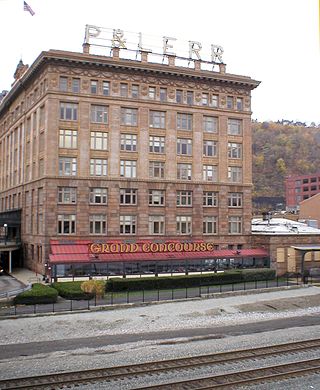
Station Square is a 52-acre (210,000 m2) entertainment complex located in the South Shore neighborhood of Pittsburgh, Pennsylvania, United States across the Monongahela River from the Golden Triangle of downtown Pittsburgh. Station Square occupies the buildings and land formerly occupied by the historic Pittsburgh & Lake Erie Railroad Complex, including the Pittsburgh & Lake Erie Railroad Station, which are separately listed on the National Register of Historic Places.

This is a list of the National Register of Historic Places listings in Allegheny County, Pennsylvania.

Dixmont State Hospital was a hospital located northwest of Pittsburgh, Pennsylvania. Built in 1862, Dixmont was once a state-of-the-art institution known for its highly self-sufficient and park-like campus, but a decline in funding for state hospitals and changing philosophies in psychiatric care caused the hospital to be closed in 1984. After more than two decades of abandonment, it was demolished in 2006. The campus spanned a total of 407 acres (165 ha). Reed Hall is listed on the National Register of Historic Places.
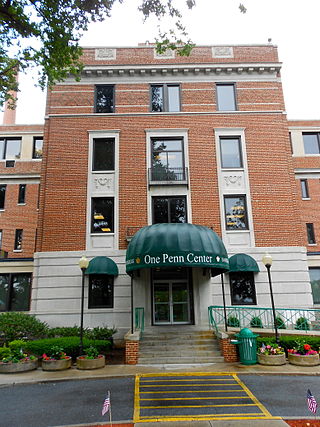
Polyclinic Medical Center, also known as Polyclinic Hospital, is a polyclinic in Harrisburg, Pennsylvania, and part of UPMC Pinnacle, a regional system of the University of Pittsburgh Medical Center (UPMC) that serves South Central Pennsylvania.
The Pittsburgh History & Landmarks Foundation (PHLF) is a nonprofit organization founded in 1964 to support the preservation of historic buildings and neighborhoods in Pittsburgh, Pennsylvania, United States.

The Washington County Courthouse is located in downtown Washington, Pennsylvania, United States. It was listed on the National Register of Historic Places on July 30, 1974. It is designated as a historic public landmark by the Washington County History & Landmarks Foundation.
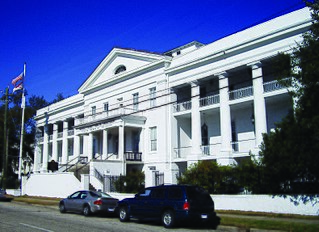
The United States Marine Hospital, formerly known as Frank S. Keeler Memorial Hospital, is a historic Greek Revival hospital building in Mobile, Alabama, United States. Construction began in 1838 and was completed in 1842. It was designed by architect Frederick Bunnell and was operated by the Marine Hospital Service from its opening until it closed, in 1952. It treated injured Confederate and Union soldiers during the American Civil War. It shares some design features, such as its two-story colonnades, with its neighbor, the old Mobile City Hospital.

The Boston Consumptives Hospital is a historic tuberculosis hospital in the Mattapan neighborhood of Boston, Massachusetts. It consists of a complex of eighteen historic buildings on 52 acres (21 ha) of land. Most of these buildings were built between 1908 and 1932, although the Superintendent's House predates the hospital's construction; it is an Italianate house built c. 1856. They are predominantly brick buildings that are Colonial Revival in character, although the 1929 main administration building has a variety of different revival elements. Several of the buildings on the campus—The Administrative or Foley Building; The Doctor's Residences, Dormitories and Wards; and The Power House—were designed by the renowned architectural firm Maginnis and Walsh. The complex was the largest tuberculosis hospital in the state, built in response to reports that the disease was responsible for more deaths than any other in the city. The facility was used for the treatment of tuberculosis through the middle of the 20th century, and then stood largely vacant until 2002, when plans were laid to rehabilitate the property for other uses.

The following properties are listed on the National Register of Historic Places in Pittsburgh, Pennsylvania.

This is a list of the National Register of Historic Places listings in Greene County, Pennsylvania.
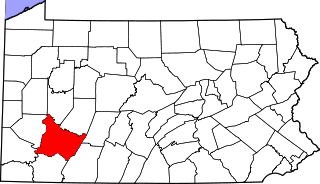
This is a list of the National Register of Historic Places listings in Westmoreland County, Pennsylvania.

Baxter High School is a historic high school building in the Homewood North neighborhood of Pittsburgh, Pennsylvania. Built in 1908, is now home to the Pittsburgh Student Achievement Center, an alternative school for grades 6-12. It was listed on the National Register of Historic Places in 1986.
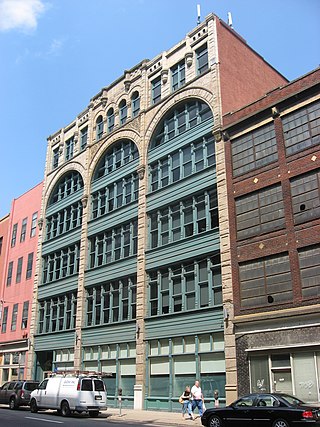
The Byrnes & Kiefer Building in the Strip District neighborhood of Pittsburgh, Pennsylvania, is a building from 1892. It was listed on the National Register of Historic Places in 1985.

Seaview Hospital is a historic hospital complex in Willowbrook on Staten Island, New York. The original complex was planned and built between 1905 and 1938 and was the largest and most costly municipal facility for the treatment of tuberculosis of its date in the United States. After being shuttered, the complex was listed as a national historic district.
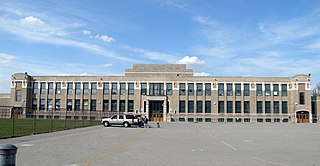
The Greenfield Elementary School in the Greenfield neighborhood of Pittsburgh, Pennsylvania, is a building from 1922. It was listed on the National Register of Historic Places in 1986. Pennsylvania also has an Albert M. Greenfield Elementary School in Philadelphia.

The Liberty School No. 4, Friendship Building is a school building built in 1899 in the Friendship neighborhood of Pittsburgh, Pennsylvania. It now houses Pittsburgh Montessori School PreK-5, a public Montessori Magnet School that is part of the Pittsburgh Public School District. It was listed on the National Register of Historic Places in 1986.

Pine Camp Hospital originally opened as Pine Camp Home for Consumptives, on 28 Nov 1910. It operated as a tuberculosis hospital from 1910 to 1957. The complex is located on Old Brook Road, near Ginter Park in Richmond, Virginia. Over time the original structures were replaced with a two-story Central Building (1932) and a one-story, Bungalow-style Administration Building (1932). Both buildings are constructed of structural tile covered with plaster. Also on the property is a contributing one-story, stuccoed masonry laundry and garage building (1922). After 1957 the property was converted for use as a recreation center.

The Lawrenceville Historic District is a U.S. historic district in Pittsburgh, Pennsylvania, which encompasses the majority of the Lawrenceville neighborhood. The historic district includes 3,217 contributing resources, many of which are rowhouses, commercial buildings, and former industrial properties built between the 1830s and early 20th century. The district was listed on the National Register of Historic Places in 2019.
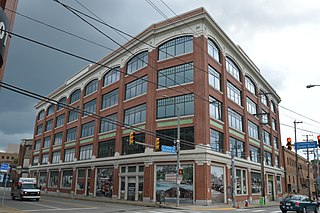
The Ford Motor Company Assembly Plant is a historic former automobile assembly plant in the Bloomfield neighborhood of Pittsburgh, Pennsylvania. Located along a stretch of Baum Boulevard nicknamed "Automobile Row" due to its high concentration of auto-related businesses, the plant was built in 1915 by Ford Motor Company to assemble Ford Model T cars using the company's pioneering mass production processes. It was designed by Ford's corporate architect John H. Graham, Sr. and constructed from reinforced concrete. The plant consists of an eight-story main building which contained the assembly areas and a vehicle showroom, and a six-story crane shed which was used to hoist parts unloaded from the adjacent Pennsylvania Railroad tracks to the appropriate level for assembly. Due to the steeply sloping site, the building has only five stories above grade along the street elevations.
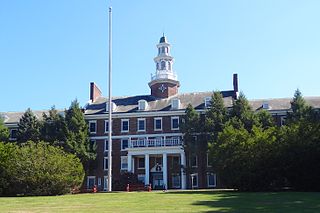
Roosevelt Hospital is a historic building located at 1 Roosevelt Drive in the township of Edison in Middlesex County, New Jersey. It was added to the National Register of Historic Places on March 5, 2002, for its significance in health and medicine, in particular the treatment of tuberculosis. It is currently an affordable senior (62+) housing development. It consists of 84 one- and two-bedroom units, ranging from 659 square fee to 1,034 square feet. Units are affordable at a variety of income tiers and ADA units are available to those with mobility challenges.

























